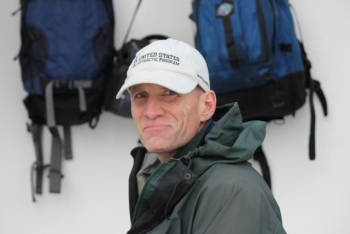Hydropower has been gaining popularity in the United States and around the world recently because it is considered a relatively clean, renewable and low carbon producing energy source. And, according to the Alaska Energy Authority, it can even, benefit fish. According to AEA, its proposal to divert water from the West Fork Upper Battle Creek drainage in order to supplement the power generating capacity for the Bradley Lake Hydroelectric Project near the Fox River Flats estuary on the east end of Kachemak Bay would actually be good for fish. (Homer News, July 20, 2017). This claim is, apparently, based on the presumption that “too much” water during the summer months limits salmon fry and juvenile productivity and creates faster currents that can flush younger fish downstream where they may be vulnerable to predation or higher salinity conditions. Such conclusions, however, beg the obvious question that, if the fish in Battle Creek are in such bad shape from the natural condition which have existed for thousands of years, how have they survived there for that same amount of time?
In reality, it is more often the case that hydropower projects harm fish and wildlife by damming rivers, diverting flows away from streams when they need it most, changing migration patterns, causing low dissolved oxygen levels in the water and resulting in increasing water temperatures. More importantly, the extent of these impacts may not be discovered until long after the projects are up and running. An extreme example of this is the system of hydropower dams along the Columbia River running through Oregon and Washington, which have almost single handedly decimated a salmon population that once was once so vast that it was reported that “you could walk across their backs” to the other side.
The Battle Creek Diversion could impact fish for the simple reason that hydropower is typically focused on generating maximum power production during times when it is needed most rather then adequate flows for fish. In fact, both the U.S. Fish and Wildlife (USFWS) and National Marine Fisheries Services (NMFS) have said that the project “has the potential to adversely affect the functioning of the Battle Creek ecosystem and its natural resources” primarily because AEA has not provide sufficient data or information to show that the amount of water taken out of Battle Creek will leave adequate flows needed to protect fish habitat.
Similarly, the onset of climate change, has resulted in increasing temperatures and decreasing snowpack, causing declines in stream flows for a significant number of a streams throughout the Kenai Peninsula, some of which are already experiencing summer temperatures that cause potentially lethal stress to salmon. It seems that we should be asking, therefore, whether we need to be removing stream flows out of Battle Creek that could help offset increasing temperatures. It also seems that this question is particularly pertinent given the fact that, right now, there is just one 75-megawatt capacity transmission line connecting Bradley Lake to the Railbelt grid, meaning the 120-megawatt hydro project already can’t be utilized to full capacity. This issue has caused some of the AEA board members to express skepticism about the necessity of the Battle Creek project. At recent board meeting, in fact, AEA board Vice Chair Dana Pruhs compared the proposal to “building a four-lane bridge on a two-lane highway.”
Therefore, should AEA wait to move forward with the diversion until the project is actually needed? In the meantime, we could figure out a way to protect salmon habitat in Battle Creek, by including federal fish and wildlife agency recommendations for minimum flows necessary to adequately maintain viable spawning and rearing habitat. Such recommendations could be developed in accordance with a Diversion Flow Release Management Plan and a stream gaging plan, which could be developed in coordination with the resource agencies oversight.
Similarly, such plans could include stream temperature and other data which is being collected around the Kenai Peninsula. Researchers, for example are, currently, studying stream temperature increases, how watersheds off-set such increases and how these phenomena relate to protecting fish and wildlife habitat and are conducting Salmon Surveys in the Fox River Flats and Bradly Creek estuaries to see how Bradley Hydro Project including the Battle Creek Diversion may impact salmon populations.
If it is actually possible for AEA to have it’s cake and eat it too, it should wait until the Battle Creek Diversion is actually needed so that steps can be taken to protect the Creek valuable salmon population.
Hal Shepherd is a writer and consultant focusing on water resource management and climate adaption planning and living in Homer.



